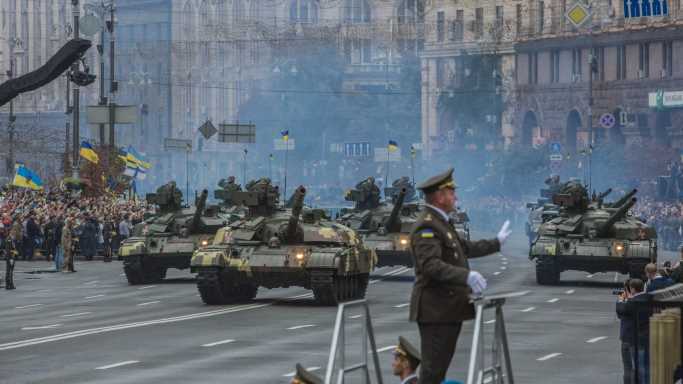A Look at the Recent Military History of Every Former Soviet Republic
As the world reels from Russia’s incursion into Ukraine, it is worth noting that Russian expansionism is nothing new. Russia, the world’s largest nation by area, has been casting its eye on neighboring territories for much of its history, from the time it was an imperial power to its emergence as the communist colossus Soviet Union in the 20th century.
Ukraine is one of 15 nations that once were part of the Soviet Union. Before the creation of the world’s most powerful communist state after World War I, many of these places had been absorbed into the vast Russian Empire during the 18th and 19th centuries. And after the dissolution of the USSR in 1991, they broke into 15 nations. (See how Russia and Ukraine military spending compares to the world.)
To find the countries that formed the USSR before its dissolution in 1991, 24/7 Wall St. used History.com’s information about the Soviet Union. All other data is from the World Bank and for 2020 with noted exception. GDP and GNI per capita figures are in current U.S. dollars. Turkmenistan’s GDP and GNI figures are for 2019.
To understand Russian expansionism, one has to understand its geography and its historic fear of being invaded. The country’s western borders have no mountain ranges, bodies of water, or other geographical features to serve as natural defenses. Russia also has few ports, and they are mostly unusable during the winter. Russian expansionism in the west has been in response to invasions by Sweden, France, and Germany, among others, and it has sought buffer states to protect it. (This war killed the most people in history.)
The Baltic nations of Latvia, Lithuania, and Estonia, and Belarus, Ukraine, and Moldova have served as buffer states to Russia’s west. Georgia, Armenia, and Azerbaijan serve the same purpose to Russia’s southwestern flank, while Kazakhstan, Uzbekistan, Turkmenistan, Kyrgyzstan, and Tajikistan border Russia east of the Black Sea in Asia.
The former Soviet republics have not been independent that long and have little in the way of democratic traditions. They have had mixed results in transitioning to representative government from the one-party system under the Soviet Union. Many have had presidents who have stayed in power for many years and exercised authoritarian power. Corruption has been a legacy of the former Soviet regime. These nations also have had difficulty making the shift to market-oriented economies from centralized, planned economies.
The Baltic nations have gravitated toward the West since the dissolution of the Soviet Union, joining NATO and the European Union, much to the concern of Russia.
Click here to look at the recent military history of every former Soviet Republic
Sponsored: Find a Qualified Financial Advisor
Finding a qualified financial advisor doesn’t have to be hard. SmartAsset’s free tool matches you with up to 3 fiduciary financial advisors in your area in 5 minutes. Each advisor has been vetted by SmartAsset and is held to a fiduciary standard to act in your best interests. If you’re ready to be matched with local advisors that can help you achieve your financial goals, get started now.
Source: Read Full Article

